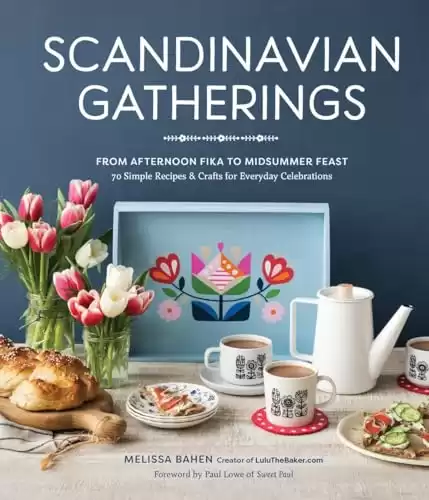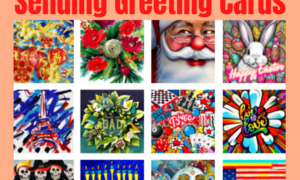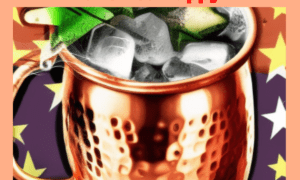
Swedish Midsummer is today!
Download the 38 Hertz Celebration Book with 365 days of celebrations!
HOW TO CELEBRATE MIDSUMMER
- Throw a Swedish Midsommer Party.
- Make a Midsummer MayPole.
- Include flowers! Flowers in vases on tables, flower crowns, flower wreaths, picking wildflowers.
- Finish off the day with a bonfire with magical colors.
- Dress in Midsummer Costumes.
- If you love the article image, purchase it on these fun products on Zazzle!
FEATURED ITEM FOR MIDSOMMER CELEBRATION
On the holiday of midsommer, people all over Scandinavia celebrate the longest day of the year. Bonfires are lit, and families come together to picnic and sing songs. For many, the holiday is a time to relax and enjoy the warm weather. However, midsummer also has a more spiritual side. In folklore, it is believed that the sun stays up longer on midsummer because the gods are celebrating.
It is also said that this is a time when magical creatures like elves and fairies are especially active. As a result, midsummer is often seen as a time of good luck and fortune. Whether you’re picnicking with family or seeking out some magical creatures, midsummer is sure to be a celebration that you’ll always remember.
HISTORY OF THE MIDSOMMER CELEBRATION
Midsummer is an ancient celebration with a rich and fascinating history. Many cultures around the world have marked the summer solstice with rituals and traditions that honor the longest day of the year. In Scandinavia, the midsummer festival is known as “Midsommar” and is traditionally celebrated on June 24th. This holiday has been celebrated for thousands of years and was originally a pagan festival that honored the fertility and abundance of nature.
Over time, Christian traditions were incorporated into the holiday, and it became associated with St. John the Baptist. Today, midsummer celebrations often involve dancing around a decorated Maypole, feasting on traditional foods, and lighting bonfires to ward off evil spirits. Whether you’re participating in a modern-day midsummer celebration or exploring the holiday’s ancient roots, there’s no denying the timeless magic and allure of this summer solstice festival.
100 WAYS TO CELEBRATE MIDSUMMER
- Swedish Meatballs (Köttbullar): Savory meatballs made with a blend of ground meat, breadcrumbs, and spices, served with lingonberry sauce.
- Pickled Herring (Sill): Marinated herring fillets served with onions, dill, and boiled potatoes.
- Crispbread (Knäckebröd): Thin and crispy flatbread made with whole grain rye flour, perfect for topping with cheese or spreads.
- Gravlax: Sliced cured salmon, typically marinated with dill, sugar, and spices, served with mustard sauce.
- Potato Salad (Potatissallad): Creamy potato salad made with boiled potatoes, mayonnaise, sour cream, and chives.
- Prinsesstårta: Traditional Swedish layer cake made with sponge cake, raspberry jam, vanilla custard, whipped cream, and green marzipan.
- Smörgåstårta: Savory sandwich cake made with layers of bread, mayonnaise, various fillings such as shrimp, ham, eggs, and vegetables, topped with creamy frosting and garnishes.
- Gubbröra: Traditional Swedish egg salad made with chopped hard-boiled eggs, onions, anchovies, and dill, typically served on crispbread.
- Pea Soup (Ärtsoppa): Thick and hearty split pea soup, often served with mustard and crispy bacon.
- Rye Bread (Rågbröd): Dense and hearty bread made with rye flour, often served sliced and buttered.
- Swedish Pancakes (Pannkakor): Thin and delicate pancakes served with lingonberry jam and whipped cream.
- Crayfish (Kräftor): Boiled freshwater crayfish seasoned with dill, typically enjoyed at traditional crayfish parties.
- Silltårta: Layered cake made with pickled herring, eggs, sour cream, and dill, served as a savory appetizer.
- Jansson’s Temptation (Janssons frestelse): Creamy potato and onion casserole baked with anchovies, often served as a side dish.
- Rhubarb Pie (Rabarberpaj): Sweet and tart pie made with fresh rhubarb, sugar, and a buttery crust.
- Kroppkakor: Traditional potato dumplings filled with pork or bacon, onions, and spices, boiled and served with lingonberry jam and melted butter.
- Cucumber Salad (Gurksallad): Refreshing salad made with thinly sliced cucumbers, vinegar, sugar, and dill.
- Lingonberry Jam (Lingonsylt): Tart and sweet jam made from lingonberries, often served as a condiment with savory dishes.
- Raggmunk: Crispy potato pancakes made from grated potatoes, flour, and eggs, typically served with lingonberry jam and crispy bacon.
- Semla: Sweet bun filled with almond paste and whipped cream, traditionally enjoyed on Shrove Tuesday.
- Herring Salad (Sillsallad): Creamy salad made with pickled herring, potatoes, apples, onions, and sour cream.
- Västerbotten Cheese Pie (Västerbottenpaj): Savory cheese pie made with Västerbotten cheese, eggs, cream, and pastry crust.
- Swedish Crayfish Soup (Kräftskiva): Creamy soup made with crayfish, vegetables, and dill, served as a starter at crayfish parties.
- Swedish Apple Cake (Äppelkaka): Moist and tender apple cake made with fresh apples, cinnamon, and a buttery batter.
- Kanelbullar: Soft and aromatic cinnamon buns, topped with pearl sugar, perfect for fika (coffee break).
- Maypole Dancing (Midsommarstång): Traditional folk dance around a decorated maypole, symbolizing fertility and celebrating the arrival of summer.
- Midsummer Feast (Midsommarfest): Gathering with family and friends to enjoy a festive meal featuring traditional Swedish dishes and drinks.
- Flower Crown Making (Blomsterkransar): Crafting floral crowns from fresh flowers and greenery to wear during midsummer celebrations.
- Bonfire (Midsommarbål): Lighting a large bonfire to ward off evil spirits and celebrate the longest day of the year.
- Folk Music and Dancing (Folkdans): Enjoying live music and dancing traditional Swedish folk dances like the hambo and polska.
- Picnic (Midsommarpicknick): Packing a picnic basket with delicious food and heading outdoors to enjoy nature and the summer weather.
- Games (Midsommarspel): Organizing fun outdoor games and activities like tug-of-war, sack races, and potato sack races.
- Flower Picking (Blomsterplockning): Going for a leisurely stroll through fields and meadows to pick wildflowers for decoration and enjoyment.
- Midsummer Singing (Midsommarsing): Singing traditional Swedish songs and folk tunes around the maypole and bonfire.
- Midsummer Parade (Midsommarparad): Participating in a colorful parade featuring flower-decorated floats, folk dancers, and musicians.
- Nature Walk (Naturpromenad): Exploring the beauty of the Swedish countryside with a relaxing walk through forests, lakes, and meadows.
- Outdoor Yoga (Utomhusyoga): Practicing yoga surrounded by nature, embracing the tranquility and serenity of the midsummer landscape.
- Midsummer Brunch (Midsommarbrunch): Hosting a leisurely brunch with family and friends, featuring fresh and seasonal ingredients.
- Swedish Sauna (Bastu): Relaxing in a traditional Swedish sauna to cleanse the body and soothe the mind.
- Midsummer Boat Trip (Midsommarkryssning): Taking a boat trip on a lake or river, enjoying the scenic views and serene atmosphere.
- Midsummer Art and Craft Activities (Konst och hantverk): Engaging in creative pursuits like painting, pottery, and crafting, inspired by the beauty of midsummer.
- Midsummer Flower Arranging (Blomsterarrangemang): Arranging freshly picked flowers into beautiful bouquets and table decorations.
- Midsummer Film Screening (Midsommarfilmvisning): Hosting an outdoor movie night, watching Swedish films under the stars.
- Midsummer Photography (Midsommarfotografi): Capturing the magic of midsummer with a camera, documenting the beauty of nature and the festivities.
- Midsummer Baking (Midsommarbakning): Baking traditional Swedish treats like strawberry cake, cinnamon buns, and almond tarts.
- Midsummer Craft Workshops (Midsommarhantverk): Participating in craft workshops to learn traditional Swedish handicrafts like weaving and embroidery.
- Midsummer Storytelling (Midsommarberättande): Sharing stories and folklore about midsummer traditions and legends around the bonfire.
- Midsummer Herb Gathering (Midsommarkryddplockning): Collecting herbs and wild plants for culinary and medicinal use, embracing the bounty of nature.
- Midsummer Stargazing (Midsommarstjärnskådning): Gazing up at the night sky, marveling at the stars and constellations on the longest day of the year.
- Maypole Decorating (Midsommarstång): Decorating a tall pole with flowers, ribbons, and greenery, symbolizing fertility and celebrating the summer solstice.
- Midsummer Feast (Midsommarfest): Gathering with family and friends to enjoy a festive meal featuring traditional Swedish dishes and drinks.
- Folk Music and Dancing (Folkdans): Enjoying live music and dancing traditional Swedish folk dances like the hambo and polska.
- Craft Paper Lanterns: Help children make paper lanterns to hang around the garden or house for a magical touch.
- Paint Rock Mandalas: Provide rocks and paint for children to create beautiful mandala designs, perfect for outdoor decorations.
- Build Fairy Houses: Inspire children to build tiny fairy houses using natural materials like twigs, leaves, and flowers.
- Create Nature Art: Take a nature walk and collect leaves, flowers, and sticks to use in creating art pieces like leaf rubbings or nature collages.
- Play Traditional Games: Teach children classic Swedish games like Kubb or Swedish tag to enjoy with friends and family.
- Host a Teddy Bear Picnic: Organize a picnic where children can bring their favorite teddy bears or stuffed animals for a fun outdoor tea party.
- Plant Seeds or Seedlings: Allow children to plant seeds or seedlings in the garden, teaching them about growth and nature.
- Make Sun Catchers: Provide materials for children to create colorful sun catchers using beads, wire, and plastic gems.
- Have a Scavenger Hunt: Create a scavenger hunt with a list of items for children to find in nature, such as flowers, bugs, or specific types of leaves.
- Bake Cookies or Cupcakes: Spend time baking delicious treats together, allowing children to decorate them with colorful icing and sprinkles.
- Paint Flower Pots: Let children express their creativity by painting flower pots with vibrant colors and patterns.
- Make DIY Wind Chimes: Help children make their own wind chimes using recycled materials like tin cans or seashells.
- Build a Fort: Encourage imaginative play by building a fort or tent using blankets and cushions in the backyard.
- Create a Nature Journal: Provide notebooks for children to record their observations and drawings of plants, animals, and insects they encounter.
- Play with Water Balloons: Cool off on a hot day by filling water balloons for a fun outdoor water balloon fight.
- Host a Puppet Show: Help children create puppets and put on a puppet show for family and friends, incorporating midsummer themes.
- Have a Nature Scavenger Hunt: Create a list of natural items for children to search for in the backyard or local park.
- Make Bird Feeders: Use pinecones, peanut butter, and birdseed to make homemade bird feeders for feathered friends.
- Paint Pebbles: Collect smooth pebbles and paint them with colorful designs or patterns to decorate the garden.
- DIY Bubble Wands: Show children how to make their own bubble wands using pipe cleaners and dish soap for endless bubble fun.
- Storytelling Circle: Gather children for a storytelling circle where they can take turns sharing their favorite stories or making up their own.
- Outdoor Movie Night: Set up a projector outdoors and host a movie night under the stars, complete with popcorn and blankets.
- Stargazing: Spend a quiet evening stargazing with children, identifying constellations and marveling at the night sky.
- Historical Significance: Midsummer, also known as the summer solstice, has been celebrated for centuries as a time of abundance, fertility, and light.
- Astronomical Event: The summer solstice occurs when the Earth’s axial tilt is most inclined toward the sun, resulting in the longest day and shortest night of the year.
- Northern Hemisphere: In the Northern Hemisphere, the summer solstice typically falls around June 21st, marking the beginning of summer.
- Southern Hemisphere: Conversely, in the Southern Hemisphere, the summer solstice occurs around December 21st, signaling the start of winter.
- Ancient Traditions: Many ancient cultures, including the Celts and Norse, celebrated midsummer with rituals, bonfires, and feasts to honor the sun and ensure a bountiful harvest.
- Stonehenge: The prehistoric monument in England aligns with the sunrise on the summer solstice, suggesting its significance as a solar calendar or ceremonial site.
- Scandinavian Festivals: Countries like Sweden, Norway, and Denmark celebrate midsummer with vibrant festivals, maypole dancing, and outdoor gatherings.
- Flower Symbolism: Midsummer is associated with flowers like daisies, roses, and lavender, which are used to decorate homes, maypoles, and altars.
- Herbal Lore: Traditional herbal remedies and rituals are practiced during midsummer to harness the medicinal and magical properties of plants.
- Bonfires: Lighting bonfires on midsummer night is believed to ward off evil spirits, provide protection, and symbolize the triumph of light over darkness.
- Sun Worship: Midsummer celebrations often involve reverence for the sun, with rituals aimed at honoring its power and energy.
- Pagan Origins: The summer solstice was celebrated by pagans as Litha, a time to honor the sun god and celebrate the peak of the solar year.
- Fertility Rituals: Some midsummer customs are linked to fertility rites, including jumping over fires or dancing around maypoles to promote fertility and abundance.
- Modern Traditions: Today, midsummer is celebrated with various cultural events, outdoor activities, and community gatherings that highlight the season’s warmth and vitality.
- Midnight Sun: In regions near the Arctic Circle, the sun may not set on midsummer night, resulting in the phenomenon known as the midnight sun.
- Feasting: Midsummer feasts feature seasonal foods like strawberries, fresh vegetables, grilled meats, and savory pies enjoyed with family and friends.
- Music and Dance: Folk music, dancing, and singing are integral parts of midsummer celebrations, fostering a sense of joy, camaraderie, and cultural identity.
- Divination: Some believe midsummer is a potent time for divination and fortune-telling, with rituals aimed at gaining insights into the future.
- Nature Spirits: Folklore suggests that midsummer is a time when nature spirits are particularly active, making it ripe for encounters with fairies, elves, and other mystical beings.
- Witchcraft Traditions: In some cultures, midsummer is associated with witchcraft and magic, with rituals performed to harness natural energies and invoke blessings.
- Health and Wellbeing: Midsummer rituals often include practices aimed at promoting health, vitality, and harmony with nature.
- Cultural Variations: Different regions and cultures have unique customs and beliefs surrounding midsummer, reflecting the diversity of human expression and belief systems.
- Symbolic Harvest: Midsummer symbolizes the height of the growing season and the promise of a fruitful harvest to come.
- Renewal and Rebirth: Midsummer represents a time of renewal, growth, and new beginnings, both in nature and in personal endeavors.
- Connection to Nature: Above all, midsummer is a celebration of our deep connection to the natural world and the cycles of life, death, and rebirth.
Note: If the above links do not direct you to the appropriate referral on the first try, return to the article and try again.
Do you have any ideas about how to celebrate Midsummer? Please share them!













